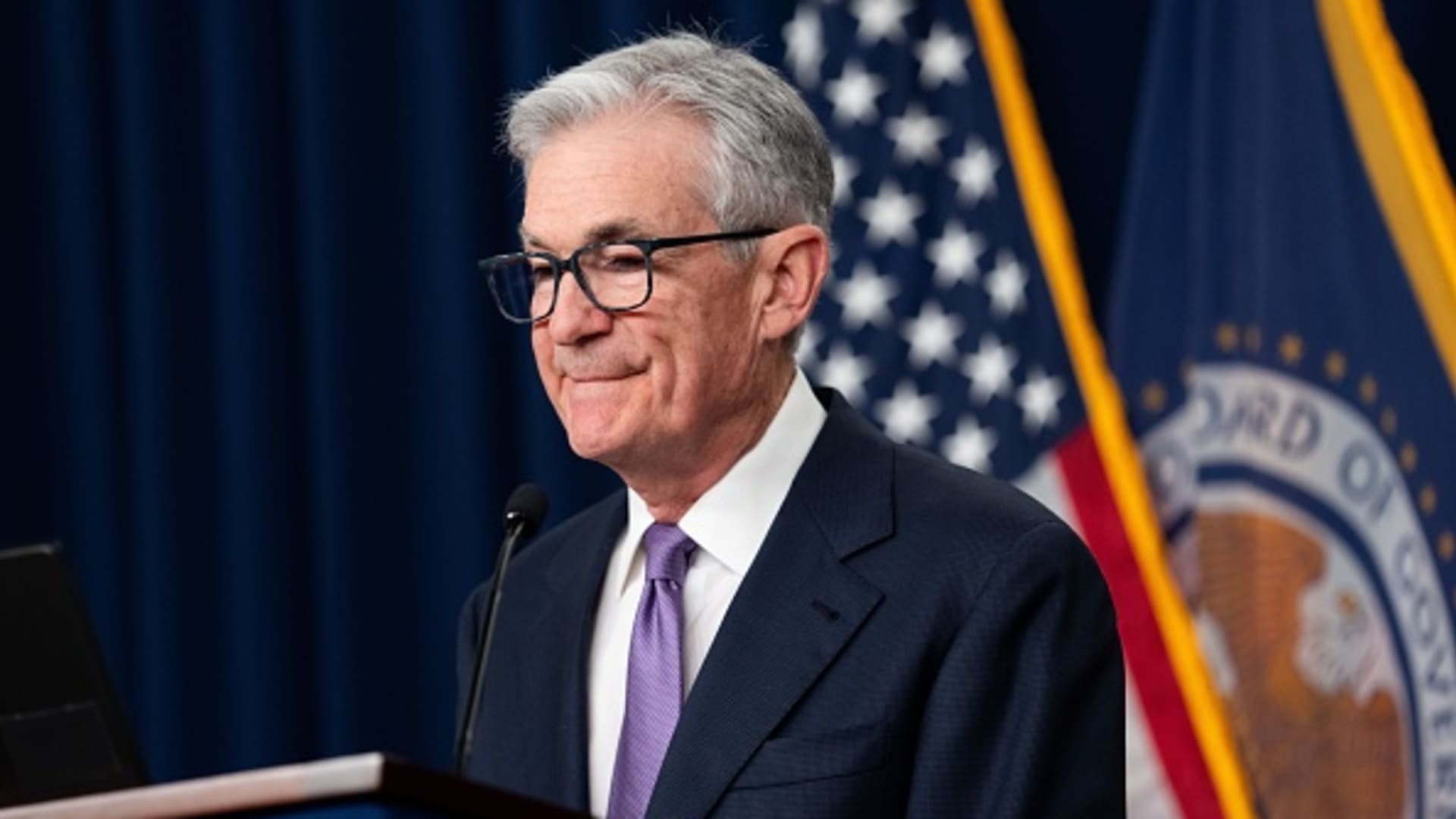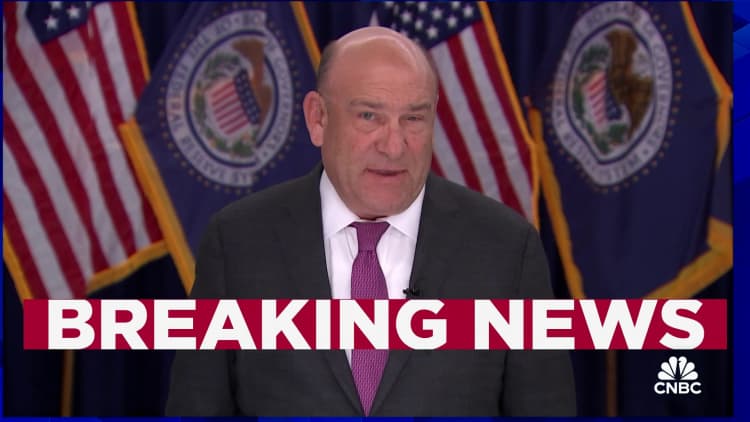Fed officials expressed caution about lowering rates too quickly at last meeting, minutes show


WASHINGTON – Federal Reserve officials indicated at their last meeting that they were in no hurry to cut interest rates and expressed both optimism and caution on inflation, according to minutes from the session released Wednesday.
The discussion came as policymakers not only decided to leave their key overnight borrowing rate unchanged but also altered the post-meeting statement to indicate that no cuts would be coming until the rate-setting Federal Open Market Committee held “greater confidence” that inflation was receding.
“Most participants noted the risks of moving too quickly to ease the stance of policy and emphasized the importance of carefully assessing incoming data in judging whether inflation is moving down sustainably to 2 percent,” the minutes stated.
The meeting summary did indicate a general sense of optimism that the Fed’s policy moves had succeeded in lowering the rate of inflation, which in mid-2022 hit its highest level in more than 40 years.
However, officials noted that they wanted to see more before starting to ease policy, while saying that rate hikes are likely over.
“In discussing the policy outlook, participants judged that the policy rate was likely at its peak for this tightening cycle,” the minutes stated. But, “Participants generally noted that they did not expect it would be appropriate to reduce the target range for the federal funds rate until they had gained greater confidence that inflation was moving sustainably toward 2 percent.”
Before the meeting, a string of reports showed that inflation, while still elevated, was moving back toward the Fed’s 2% target. While the minutes assessed the “solid progress” being made, the committee viewed some of that progress as “idiosyncratic” and possibly due to factors that won’t last.
Consequently, members said they will “carefully assess” incoming data to judge where inflation is heading over the longer term. Officials noted both upside and downside risks and worried about lowering rates too quickly.
Questions over how quickly to move
“Participants highlighted the uncertainty associated with how long a restrictive monetary policy stance would need to be maintained,” the summary said.
Officials “remained concerned that elevated inflation continued to harm households, especially those with limited means to absorb higher prices,” the minutes said. “While the inflation data had indicated significant disinflation in the second half of last year, participants observed that they would be carefully assessing incoming data in judging whether inflation was moving down sustainably toward 2 percent.”
The minutes reflected an internal debate over how quickly the Fed will want to move considering the uncertainty about the outlook.
Since the Jan. 30-31 meeting, the cautionary approach has borne out as separate readings on consumer and producer prices showed inflation running hotter than expected and still well ahead of the Fed’s 2% 12-month target.
Multiple officials in recent weeks have indicated a patient approach toward loosening monetary policy. A stable economy, which grew at a 2.5% annualized pace in 2023, has encouraged FOMC members that the succession of 11 interest rate hikes implemented in 2022 and 2023 have not substantially hampered growth.
To the contrary, the U.S. labor market has continued to expand at a brisk pace, adding 353,000 nonfarm payroll positions in January. First-quarter economic data thus far is pointing to GDP growth of 2.9%, according to the Atlanta Fed.
Along with the discussion on rates, members also brought up the bond holdings on the Fed’s balance sheet. Since June 2022, the central bank has allowed more than $1.3 trillion in Treasurys and mortgage-backed securities to roll off rather than reinvesting proceeds as usual.
‘Ample level of reserves’
The minutes indicated that a more in-depth discussion will take place at the March meeting. Policymakers also indicated at the January meeting that they are likely to take a go-slow approach on a process nicknamed “quantitative tightening.” The pertinent question is how high reserve holdings will need to be to satisfy banks’ needs. The Fed characterizes the current level as “ample.”
“Some participants remarked that, given the uncertainty surrounding estimates of the ample level of reserves, slowing the pace of runoff could help smooth the transition to that level of reserves or could allow the Committee to continue balance sheet runoff for longer,” the minutes said. “In addition, a few participants noted that the process of balance sheet runoff could continue for some time even after the Committee begins to reduce the target range for the federal funds rate.”
Fed officials consider current policy to be restrictive, so the big question going forward will be how much it will need to be relaxed both to support growth and control inflation.
There is some concern that growth continues to be too fast.
The consumer price index rose 3.1% on a 12-month basis in January – 3.9% when excluding food and energy, the latter of which posted a big decline during the month. So-called sticky CPI, which weighs toward housing and other prices that don’t fluctuate as much, rose 4.6%, according to the Atlanta Fed. Producer prices increased 0.3% on a monthly basis, well above Wall Street expectations.
In an interview on CBS’ “60 Minutes” that aired just a few days after the FOMC meeting, Chair Jerome Powell said, “With the economy strong like that, we feel like we can approach the question of when to begin to reduce interest rates carefully.” He added that he is looking for “more evidence that inflation is moving sustainably down to 2%.”
Markets have since had to recalibrate their expectations for rate cuts.
Where traders in the fed funds futures market had been pricing in a near lock for a March cut, that has been pushed out to June. The expected level of cuts for the full year had been reduced to four from six. FOMC officials in December projected three.
Don’t miss these stories from CNBC PRO:









